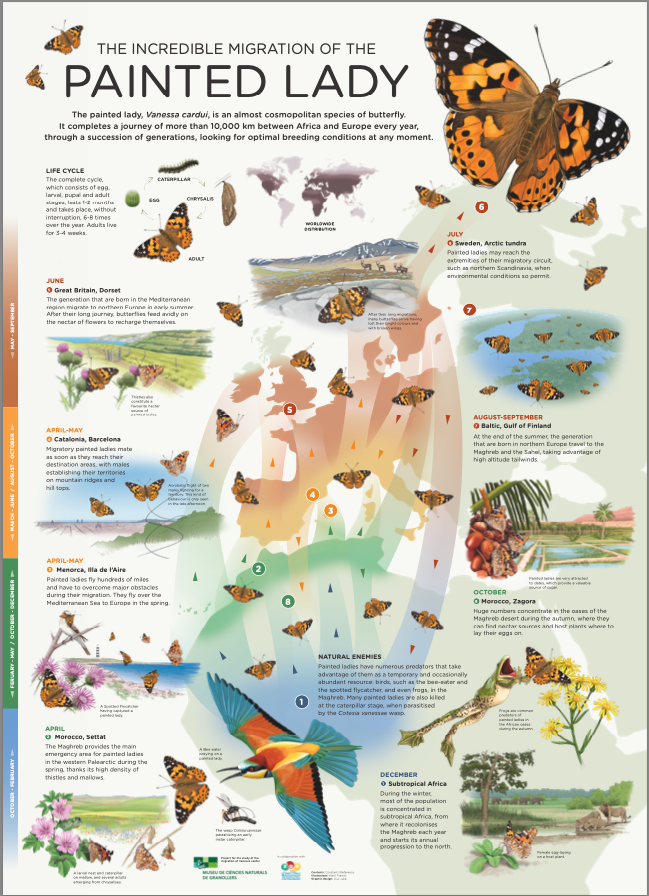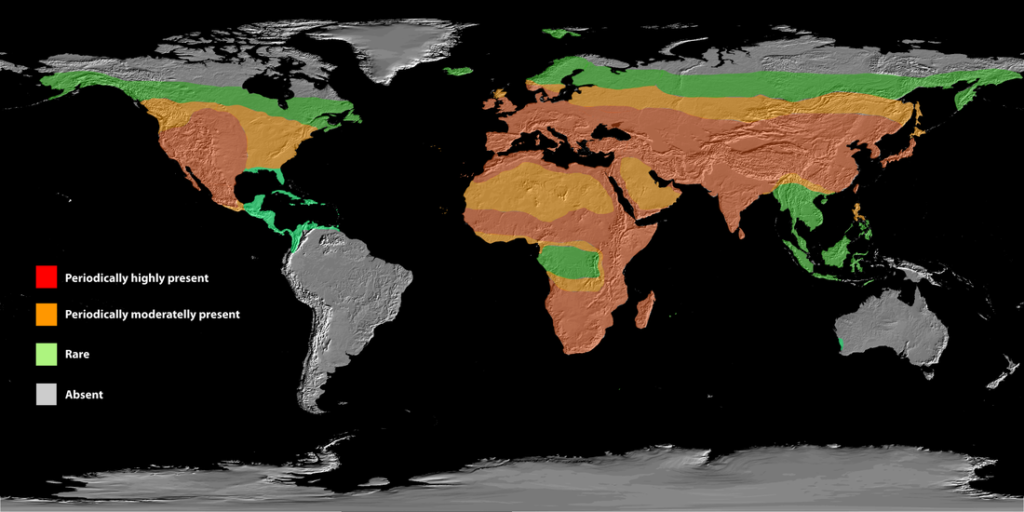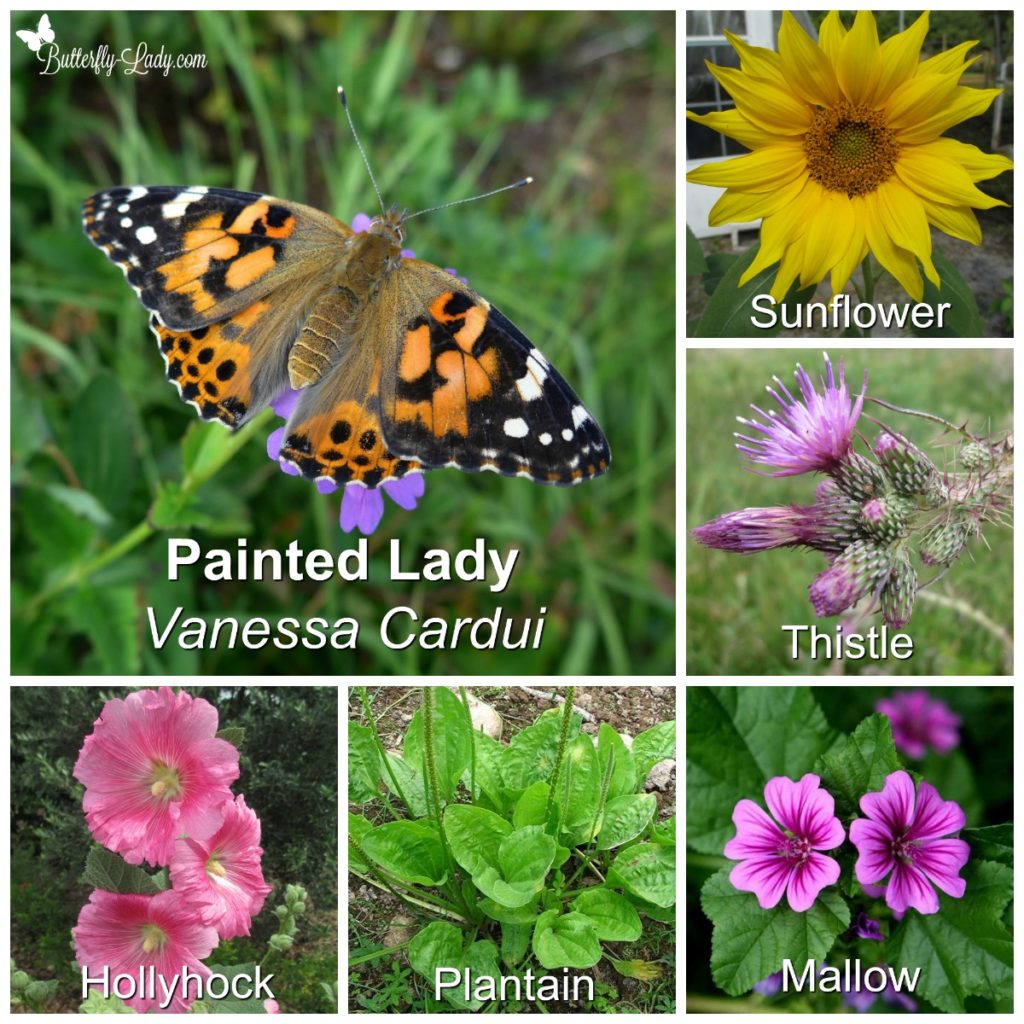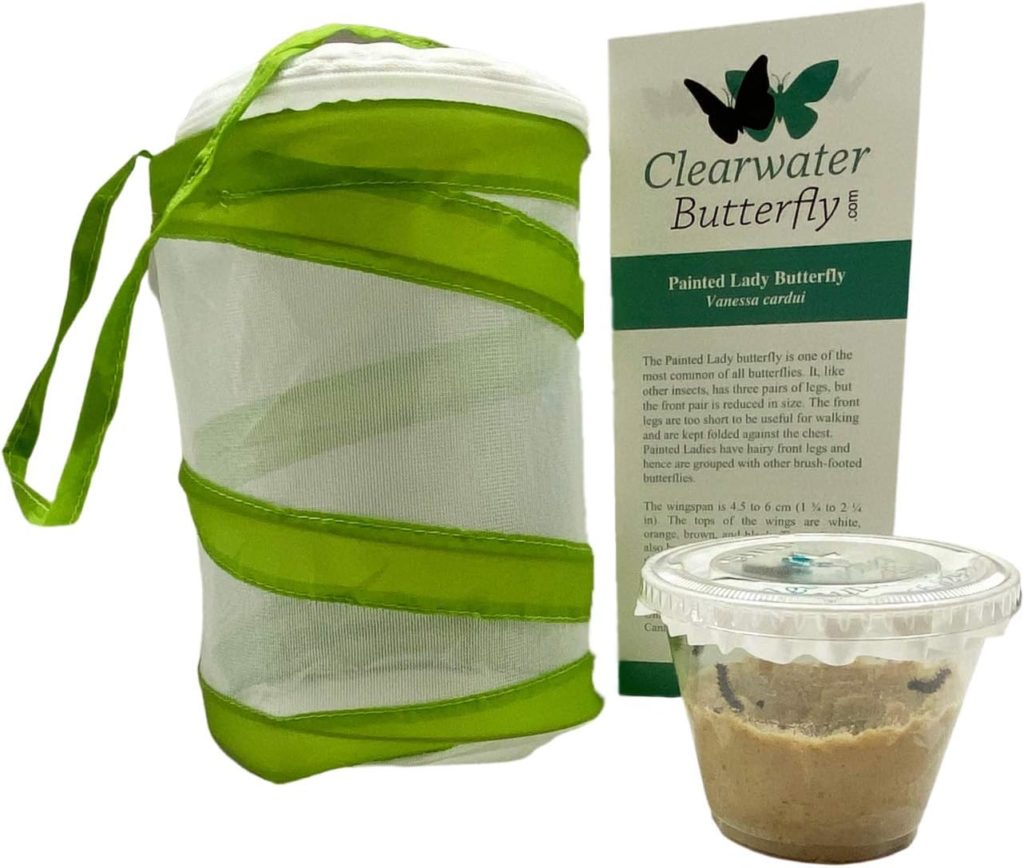Most of us are very familiar with the monarch migration this time of year. But did you know that monarchs are not the only butterflies that migrate? In fact, there is a butterfly that migrates even farther distances than the monarch.
The Painted Lady (Vanessa cardui), boasts the world’s farthest known butterfly migratory route, undertaking a phenomenal 9,000-mile round trip from tropical Africa to the Arctic Circle.

As one of the most cosmopolitan insect species in the world, the Painted Lady is found in all continents except Antarctica and Australia. Some of the reasons for its widespread distribution include a wide variety of plants it feeds and lays eggs on, the ability to migrate to avoid winter, and continuously reproducing.

Painted Lady larvae feed on an incredibly wide variety of host plants from many different families including thistles (Cirsium spp.), borage (Borago officinalis), hollyhock (Alcea rosea), mallow (Malva spp.), sunflower (Helianthus spp.), Plantain (Plantago spp.), and a few legumes including soybeans.

The Painted Lady is also known for its migratory behavior here in the United States. The butterflies will set off from their wintering grounds in the Mojave and Colorado deserts of southeastern California as winter gives way to spring. They travel roughly the same path every year, flying northwest to Sacramento in route to Oregon, Washington and beyond. (They’ve been spotted as far north as Alaska.) These migrations appear to be partially initiated by heavy winter rains in the desert where rainfall controls the growth of larval food plants.
In March 2019, after heavy rain produced an abundance of vegetation in the deserts, Southern California saw these butterflies migrating by the millions across the state.
Research on the Painted Ladies in North America is limited, but scientists believe they migrate to the southwestern United States and northwestern Mexico in the fall. They arrive in the desert in late fall and the cycle begins again.

One of the most interesting Painted Lady butterfly facts is that it can reach a speed of nearly 30 miles per hour, allowing it to travel up to 100 miles per day during its migration.
Some confuse these butterflies with the Monarch (Danaus plexippus). While their color scheme may be similar to Monarch butterflies, Painted Ladies have eyespots on the underside their wings in addition to brown coloring on both sides. Painted Ladies lack the vein pattern that Monarchs are best known for. Painted Ladies are also smaller than Monarchs, with a wingspan measuring less than 3 inches.

The Painted Lady breeds throughout the year. The female lays eggs during its migration, contributing to its global distribution. The butterfly undergoes metamorphosis as part of its life cycle that ranges from 1 month in subtropical areas to 2 months in the temperature zones.
Eggs are laid singly on plant leaves and develop over the course of 5 days, before the caterpillar hatches. Five larval stages, also known as instars, span over 25 days where the caterpillar feeds continuously and grows extensively, followed by a pupation stage when metamorphosis takes place. The adult butterfly emerges from the pupa after a week and finds a mate before settling on a leaf to lay eggs and start the cycle again.

Painted Ladies are one of the easiest butterflies to raise because not only will the young larvae feed on so many different host plants, they will also feed on a specially formulated artificial diet. This artificial diet makes it possible for the larvae to be sold in butterfly rearing kits and are often raised and studied in classrooms by elementary students.

